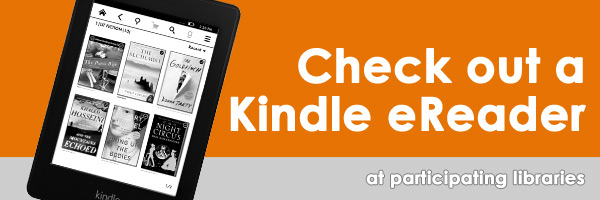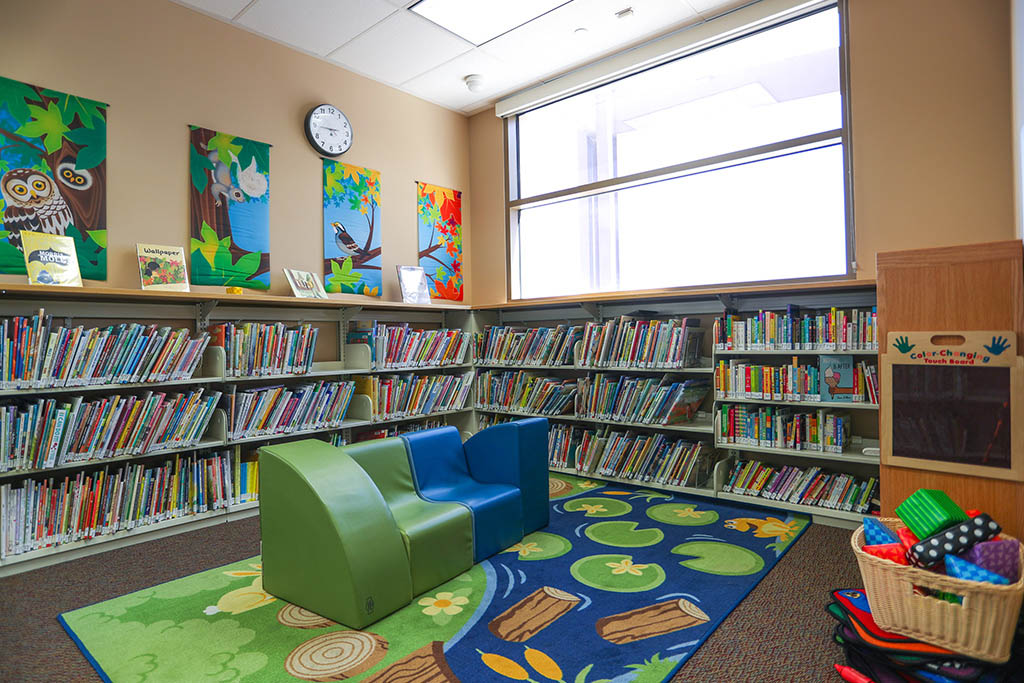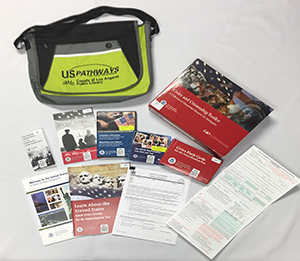Free Naloxone (Narcan)
& Fentanyl Test Strips
Free Naloxone (Narcan)
No ID Required | No Proof of Insurance Necessary | No Cost
Thanks to a partnership with Los Angeles County Department of Public Health and California Department of Health Care Services, LA County Library customers can pick up a free dose of Naloxone (Narcan) and fentanyl testing strips at a select location. Clinics are held at our libraries on select dates. Please see the information box for exact dates, times, and library locations.
Customers do not have to provide identification, proof of insurance, or payment. While onsite, customers will need to complete a brief video training on how to administer naloxone. Limit one per customer, while supplies last.
Fentanyl test strips can be used to help reduce the chance of an overdose. The strip tests drugs for fentanyl contamination and provide a simple yes or no on whether fentanyl is present, but not how much.

Naloxone Frequently Asked Questions
Naloxone is a life-saving medication used to reverse an opioid overdose, including heroin, fentanyl and prescription opioid medications. Naloxone can be quickly given through nasal spray (Narcan®) in the nose. Naloxone is safe and easy to use, works almost immediately, and is not addictive. Naloxone has very few negative effects, and has no effect if opioids are not in a person’s system.
(Source: CA Dept. of Public Health)
It is an opioid antagonist. This means that it attaches to opioid receptors and reverses and blocks the effects of other opioids. Naloxone can quickly restore normal breathing to a person if their breathing has slowed or stopped because of an opioid overdose. But, naloxone has no effect on someone who does not have opioids in their system, and it is not a treatment for opioid use disorder.
(Source: National Institute on Drug Abuse, NIH)
Yes, anyone can purchase and/or carry naloxone to help respond to an overdose. It is not just for people with an opioid or other substance use disorder. Having naloxone available allows bystanders to help save lives by preventing a fatal overdose.
(Source: Centers for Disease Control and Prevention, CDC)
Family and friends: If you or someone you know is at increased risk for opioid overdose, especially those with opioid use disorder (OUD), you should carry naloxone and keep it at home.
People who are taking high-dose opioid medications (greater or equal to 50 morphine milligram equivalents per day) prescribed by a doctor, people who use opioids and benzodiazepines together, and people who use drugs, should all carry naloxone. Because you cannot use naloxone on yourself, let others know you have it in case you experience an opioid overdose.
(Source: CA Dept. of Public Health)
Carrying naloxone provides an extra layer of protection for those at a higher risk for overdose. Although most professional first responders and emergency departments carry naloxone, they may not arrive in time to reverse an opioid overdose. Anyone can carry naloxone, give it to someone having an overdose, and potentially save a life. Bystanders such as friends, family, non-health care providers and persons who use drugs can reverse an opioid overdose with naloxone.
(Source: CA Dept. of Public Health)
Yes, naloxone is easy to use and medical training is not required. Check out CDC’s videos on how to use naloxone nasal spray.
(Source: Centers for Disease Control and Prevention, CDC)
Naloxone is a fast-acting drug that can reverse opioid overdose and restore normal breathing within 2-3 minutes. Additional doses of naloxone may be needed for larger quantities of opioids or more potent opioids, like fentanyl. If the person who has overdosed does not respond within 2 to 3 minutes after administering a dose of naloxone, administer a second dose of naloxone. Keep giving additional doses (if available) until they’re alert or until emergency assistance arrives.
What to do if you think someone is overdosing:
- Call 911 immediately. *
- Administer naloxone, if available.
- Try to keep the person awake and breathing.
- Lay the person on their side to prevent choking.
- Stay with the person until emergency assistance arrives.
*Most states have laws that may protect a person who is overdosing or the person who called for help from legal trouble.
(Source: Centers for Disease Control and Prevention, CDC and Substance Abuse and Mental Health Services Administration)
Naloxone nasal spray usually begins working within a few minutes and lasts from 60 to 120 minutes.
(Source: Narcan.com)
Naloxone can (but does not always) cause withdrawal symptoms or unpleasant physical reactions, in people who are physically dependent on opioids. Withdrawal symptoms may include fever, anxiety, irritability, rapid heart rate, sweating, nausea, vomiting, and tremors.
(Source: Centers for Disease Control and Prevention, CDC)
Naloxone won’t harm someone if they’re overdosing on opioids or other drugs, so it’s always best to use it if you think someone is overdosing.
(Source: Centers for Disease Control and Prevention, CDC)
No, naloxone is safe to use and is not addictive.
(Source: Centers for Disease Control and Prevention, CDC)
No, naloxone cannot be taken prior to using drugs to prevent an overdose.
(Source: Centers for Disease Control and Prevention, CDC)
California has no statute requiring minors to obtain parental or guardian consent prior to receiving naloxone. Additionally, Civil Code §1714.22 indicates that naloxone may be distributed to a family member, friend, or other person in a position to assist a person at risk of a suspected opioid-related overdose.
(Source: CA Dept Of Health Services)
No, naloxone is administered to someone after an overdose has occurred. Because the individual who overdosed is likely unconscious and/or their movement and breathing are restricted, they would need assistance.
(Source: Centers for Disease Control and Prevention, CDC)
No, you CANNOT reuse Naloxone Nasal Spray. Each device contains one dose of medication. The device is intended to be sprayed once, in a nostril, and then discarded. Do not test before use.
(Source: Narcan.com)
Storage:
- Follow manufacturer instructions for storing naloxone. Storage instructions may be different. Keep naloxone in its box until ready for use.
- Protect from light.
- Store at room temperature below 77°F (25°C).
- Do not freeze or expose to heat above 104°F (40°C).
- Store in a safe location.
Disposal:
- Unused naloxone: Dispose of unused naloxone at a local pharmacy or through a medicine take-back program. Talk to your pharmacist or contact your local garbage/recycling department to learn about take-back programs in your community.
- Used naloxone: Put the used naloxone nasal spray back into its box. Dispose of
it in solid waste trash.
(Source: CA Dept. of Public Health)
Narcan® nasal spray shelf-life extension: The U.S. Food and Drug Administration (FDA) has approved an extended shelf-life for the nasal spray formulation of naloxone (Narcan® [PDF]) from two years (24 months) to three years (36 months).
(Source: Narcan.com)
Naloxone
Frequently Asked Questions
Naloxone is a life-saving medication used to reverse an opioid overdose, including heroin, fentanyl and prescription opioid medications. Naloxone can be quickly given through nasal spray (Narcan®) in the nose. Naloxone is safe and easy to use, works almost immediately, and is not addictive. Naloxone has very few negative effects, and has no effect if opioids are not in a person’s system.
(Source: CA Dept. of Public Health)
It is an opioid antagonist. This means that it attaches to opioid receptors and reverses and blocks the effects of other opioids. Naloxone can quickly restore normal breathing to a person if their breathing has slowed or stopped because of an opioid overdose. But, naloxone has no effect on someone who does not have opioids in their system, and it is not a treatment for opioid use disorder.
(Source: National Institute on Drug Abuse, NIH)
Yes, anyone can purchase and/or carry naloxone to help respond to an overdose. It is not just for people with an opioid or other substance use disorder. Having naloxone available allows bystanders to help save lives by preventing a fatal overdose.
(Source: Centers for Disease Control and Prevention, CDC)
Family and friends: If you or someone you know is at increased risk for opioid overdose, especially those with opioid use disorder (OUD), you should carry naloxone and keep it at home.
People who are taking high-dose opioid medications (greater or equal to 50 morphine milligram equivalents per day) prescribed by a doctor, people who use opioids and benzodiazepines together, and people who use drugs, should all carry naloxone. Because you cannot use naloxone on yourself, let others know you have it in case you experience an opioid overdose.
(Source: CA Dept. of Public Health)
Carrying naloxone provides an extra layer of protection for those at a higher risk for overdose. Although most professional first responders and emergency departments carry naloxone, they may not arrive in time to reverse an opioid overdose. Anyone can carry naloxone, give it to someone having an overdose, and potentially save a life. Bystanders such as friends, family, non-health care providers and persons who use drugs can reverse an opioid overdose with naloxone.
(Source: CA Dept. of Public Health)
Yes, naloxone is easy to use and medical training is not required. Check out CDC’s videos on how to use naloxone nasal spray.
(Source: Centers for Disease Control and Prevention, CDC)
Naloxone is a fast-acting drug that can reverse opioid overdose and restore normal breathing within 2-3 minutes. Additional doses of naloxone may be needed for larger quantities of opioids or more potent opioids, like fentanyl. If the person who has overdosed does not respond within 2 to 3 minutes after administering a dose of naloxone, administer a second dose of naloxone. Keep giving additional doses (if available) until they’re alert or until emergency assistance arrives.
What to do if you think someone is overdosing:
- Call 911 immediately. *
- Administer naloxone, if available.
- Try to keep the person awake and breathing.
- Lay the person on their side to prevent choking.
- Stay with the person until emergency assistance arrives.
*Most states have laws that may protect a person who is overdosing or the person who called for help from legal trouble.
(Source: Centers for Disease Control and Prevention, CDC and Substance Abuse and Mental Health Services Administration)
Naloxone nasal spray usually begins working within a few minutes and lasts from 60 to 120 minutes.
(Source: Narcan.com)
Naloxone can (but does not always) cause withdrawal symptoms or unpleasant physical reactions, in people who are physically dependent on opioids. Withdrawal symptoms may include fever, anxiety, irritability, rapid heart rate, sweating, nausea, vomiting, and tremors.
(Source: Centers for Disease Control and Prevention, CDC)
Naloxone won’t harm someone if they’re overdosing on opioids or other drugs, so it’s always best to use it if you think someone is overdosing.
(Source: Centers for Disease Control and Prevention, CDC)
No, naloxone is safe to use and is not addictive.
(Source: Centers for Disease Control and Prevention, CDC)
No, naloxone cannot be taken prior to using drugs to prevent an overdose.
(Source: Centers for Disease Control and Prevention, CDC)
California has no statute requiring minors to obtain parental or guardian consent prior to receiving naloxone. Additionally, Civil Code §1714.22 indicates that naloxone may be distributed to a family member, friend, or other person in a position to assist a person at risk of a suspected opioid-related overdose.
(Source: CA Dept Of Health Services)
No, naloxone is administered to someone after an overdose has occurred. Because the individual who overdosed is likely unconscious and/or their movement and breathing are restricted, they would need assistance.
(Source: Centers for Disease Control and Prevention, CDC)
No, you CANNOT reuse Naloxone Nasal Spray. Each device contains one dose of medication. The device is intended to be sprayed once, in a nostril, and then discarded. Do not test before use.
(Source: Narcan.com)
Storage:
- Follow manufacturer instructions for storing naloxone. Storage instructions may be different. Keep naloxone in its box until ready for use.
- Protect from light.
- Store at room temperature below 77°F (25°C).
- Do not freeze or expose to heat above 104°F (40°C).
- Store in a safe location.
Disposal:
- Unused naloxone: Dispose of unused naloxone at a local pharmacy or through a medicine take-back program. Talk to your pharmacist or contact your local garbage/recycling department to learn about take-back programs in your community.
- Used naloxone: Put the used naloxone nasal spray back into its box. Dispose of
it in solid waste trash.
(Source: CA Dept. of Public Health)
Narcan® nasal spray shelf-life extension: The U.S. Food and Drug Administration (FDA) has approved an extended shelf-life for the nasal spray formulation of naloxone (Narcan® [PDF]) from two years (24 months) to three years (36 months).
(Source: Narcan.com)
Fentanyl Test Strips Harm Reduction
Frequently Asked Questions
LA County Library is expanding our Naloxone distribution project to include Fentanyl Test Strips. Together these two products create a harm reduction strategy to combat the opioid overdose crisis & create safer, healthier Communities.
Fentanyl is a synthetic opioid, up to 50 times stronger than heroin and incredibly 100 times more potent than morphine.
Fentanyl is sneaky: you can’t see, taste, or smell it. Many illicit substances could be laced with this deadly opioid to make them cheaper, more powerful, and more addictive. Just a tiny amount of fentanyl, an amount smaller than a raindrop or a few grains of salt, could be fatal.
(Source: California Department of Public Health- 2024)
Fentanyl Test Strips (FTS) are small strips of paper that can detect the presence of fentanyl in different drugs (such as cocaine, methamphetamine, and heroin) and drug forms (pills, powder, and injectables).
Fentanyl Test Strips give a simple yes or no on whether fentanyl is present. FTS cannot tell how much fentanyl is present in a sample. Anyone can purchase and use FTS to test for the presence of fentanyl in a drug.FTS are a harm reduction strategy designed to reduce the negative consequences of drug use, including the risk of fatal and nonfatal overdose
(Source: California Department of Public Health 2024 and CA Dept. of Health Care Services)
FTS can help prevent overdose if used correctly. FTS are designed to test the drug supply prior to ingestion. FTS are dipped into water with dissolved drug residue. The test strip is then set on a flat surface until results appear, typically within 5 minutes. One line indicates fentanyl is present in the sample; two lines indicate a negative result.
Because the test strips are highly sensitive, a minimal amount of drug residue is sufficient to obtain a result.
(Source: CA Dept. of Public Health and CA Dept. of Health Care Services)
No. Fentanyl test strips are not intended to be used for urine testing. They are to be used with a small amount of drug residue dissolved in water.
(Source: CA Dept. of Health Care Services)
Yes. Most FTS are between 96% to nearly 100% accurate in detecting the presence of even small amounts of fentanyl
(Source: CA Dept. of Public Health and University of California)
No, anyone can purchase and use FTS to test for the presence of fentanyl in a drug. FTS are not prohibited in California
(Source: University of California)
Yes. Beginning in November 2024 -13 LA County Library locations will be distributing Fentanyl Test Strips and Naloxone together every Wednesday from 12:00 p.m. – 4:00 p.m. The library locations are:
- AC Bilbrew
- Claremont
- Compton
- East Los Angeles
- El Monte
- Lancaster
- Leland R. Weaver
- Lennox
- Malibu
- Norwalk
- San Fernando
- Temple City
- West Hollywood
For best results, store Fentanyl Test Strips in a temperature range of 36-86°F (2-30°C). Keep the strips out of light. They should not be stored in a vehicle or any place that has extreme temperature variation.
The Fentanyl Test Strips distributed from the Department of Health Care Services have a shelf life of two years. The expiration date is printed on the package.
(Source: CA Dept of Public Health)
Learn about fentanyl and download resources from the National Harm Reduction Coalition: Fentanyl.
https://harmreduction.org/issues/fentanyl/
County Of Los Angeles Public Health Fentanyl Testing Pocket Card http://publichealth.lacounty.gov/chs/Docs/FentanyPocketCard.pdf
Visit the Department of Health Care Service’s (DHCS) Choose Change California statewide campaign webpage for information and education on treatment options and support. https://choosechangeca.org/
Fentanyl Testing to Prevent Overdose – CA Dept of Public Health https://www.cdph.ca.gov/Programs/CID/DOA/CDPH%20Document%20Library/Fact_Sheet_Fentanyl_Testing_Approved_ADA.pdf
CA Department of Public Health – Facts Fight Fentanyl
https://www.factsfightfentanyl.org
Harm Reduction Substance Abuse and Prevention Control- County of LA Public Health http://publichealth.lacounty.gov/sapc/public/harm-reduction/#resources
If you or someone you know is struggling with addiction, recovery is possible. For help, please call the free and confidential treatment referral hotline 1-800-662-HELP or visit findtreatment.gov.










